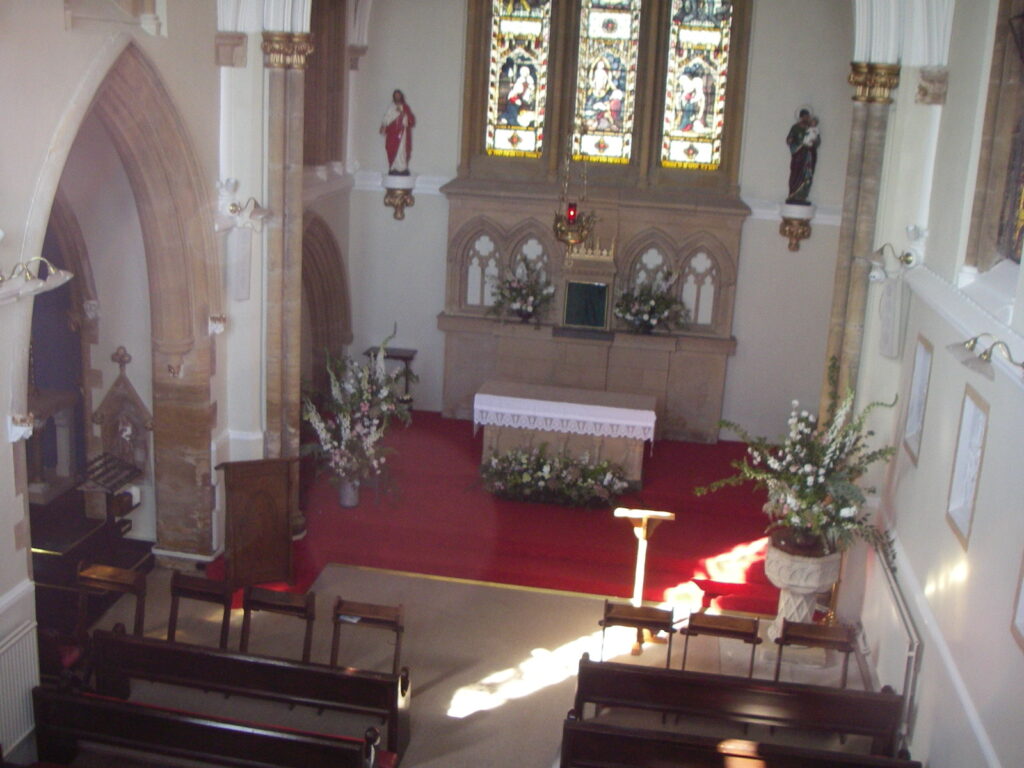St Michael & St George

Silver Street, Lyme Regis, Dorset DT7 3HS
We would like to welcome you to this little church – “The House of God, the church of the living God, the pillar and ground of truth.” (1 Timothy 3 : 15.)
The Catholic history of Lyme Regis dates back over a thousand years. In 774 the King of the West Saxons gave to the monks of Sherborne a grant of land on the Western bank of the river Lym. Lyme takes its name from this river and it is assumed that the addition of Regis was made in the reign of Edward 1st. to form the name of Lyme Regis or King’s Lyme. The royal charter was granted in 1284. An official seal was made and on it is the first representation of St. George. On the stern of the seal is represented Michael, the Archangel. To this quaint seal, one assumes, the present church owes its dedication to St. Michael, the Archangel and St. George, the Protector of England.
Early post reformation history of the Church in Lyme is meagre. The few Catholics about here travelled to Exeter or Chideock until the Axminster church, to which they liberally subscribed, was opened on the 15th August, 1831. It was to the piety and generosity of Mrs. Bellingham that the Catholic Church in Lyme owed its establishment. On settling here with her son and three daughters, she obtained permission from Bishop Baines to have a resident priest. He celebrated Mass in the house of Edward Hebden, now the vicarage, and also, in a house at the Cobb, on which site now stands the coastguard buildings.
Mrs. Bellingham’s only son died with his regiment in India. In his desk, his mother found £100 and with this she began a fund to finance the building of a church in Lyme.. The present site of the church was purchased for £273 on the 17th. February 1835. Father Charles Fisher, the first priest, had the foundation stone laid on 23rd. April 1835 and building commenced to the design of E. Goodridge, of Bath. Mass was first offered in the new, yet unfinished church, on 27th. August 1837.
Many priests served this parish in the early period and it is known that one resided in the cottage called St Heliers in Silver Street. Perhaps the most eminent was Father William Vaughan, who later became the second Bishop of our diocese of Plymouth, a post which he retained for forty seven years. It was he who built the presbytery to Welby Pugin’s design and he moved in on the first day of 1839. In about 1840, a school was built, the ruins of which lay at the western end of the church until the present function room was constructed recently. In 1851 the Lady Chapel was completed. The stained glass window behind the High Altar depicting the Immaculate Conception and St. Michael and St. George , was presented in June 1883. At a cost of £140, it was the work of Messrs.Westlake, Lavers and Company of London . The church spire and tower were completed in 1886 .
Do pray for all who handed down to us , such a beautiful church.
‘What praise such men will have in eternity. It is not ours to judge – they were at least great men and deserve, beyond controversy, the brief homage of their fellows “.
Mgr. Ronald Knox.